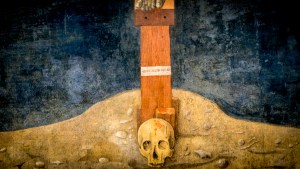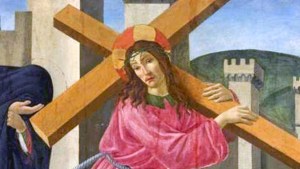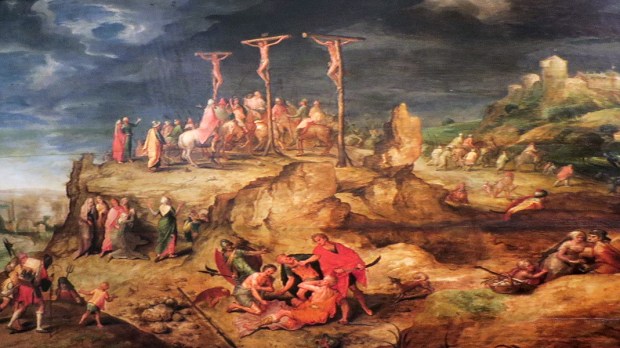In almost all of the Gospel narratives, Jesus is crucified at a placed called “Golgotha.” It is a strange word, one that is not easy to understand.
In the Gospel of John, we read, “So they took Jesus, and he went out, bearing his own cross, to the place called the place of a skull, which is called in Hebrew Golgotha” (John 19:17).
The Gospel writer plainly tells the reader that Golgotha is a Hebrew word for “the place of a skull,” which is the same as the English word “Calvary,” and refers to the same place.
The real question, however, is whose skull?
According to the Catholic Encyclopedia, “Calvary may have been a place of public execution, and so named from the skulls strewn over it. The victims were perhaps abandoned to become a prey to birds and beasts, as Jezebel and Pharaoh’s baker had been (2 Kings 9:35; Genesis 40:19, 22).”
Furthermore, there is a nearby Jewish cemetery that has a long history, but is not related to the criminals who would be executed on the same hill.
It’s also a possibility that the shape of the hill resembles a skull, which is why the local people called it “the place of a skull.”
A fascinating long-held tradition is that the “skull” located on Golgotha is the skull of Adam.
There was a tradition current among the Jews that the skull of Adam, after having been confided by Noah to his son Shem, and by the latter to Melchisedech, was finally deposited at the place called, for that reason, Golgotha. The Talmudists and the Fathers of the Church were aware of this tradition, and it survives in the skulls and bones placed at the foot of the crucifix. The Evangelists are not opposed to it, inasmuch as they speak of one and not of many skulls. (Luke, Mark, John, loc. cit.)

Read more:
Why is there a skull beneath my crucifix?
In reality, it might be a combination of all these theories as to why the hill was called Golgotha. It provides a great deal of material for meditation and helps support the providential plan of God.
Everything happens for a reason, especially the place of Jesus’ death.

Read more:
What kind of cross did Jesus carry to Calvary?

